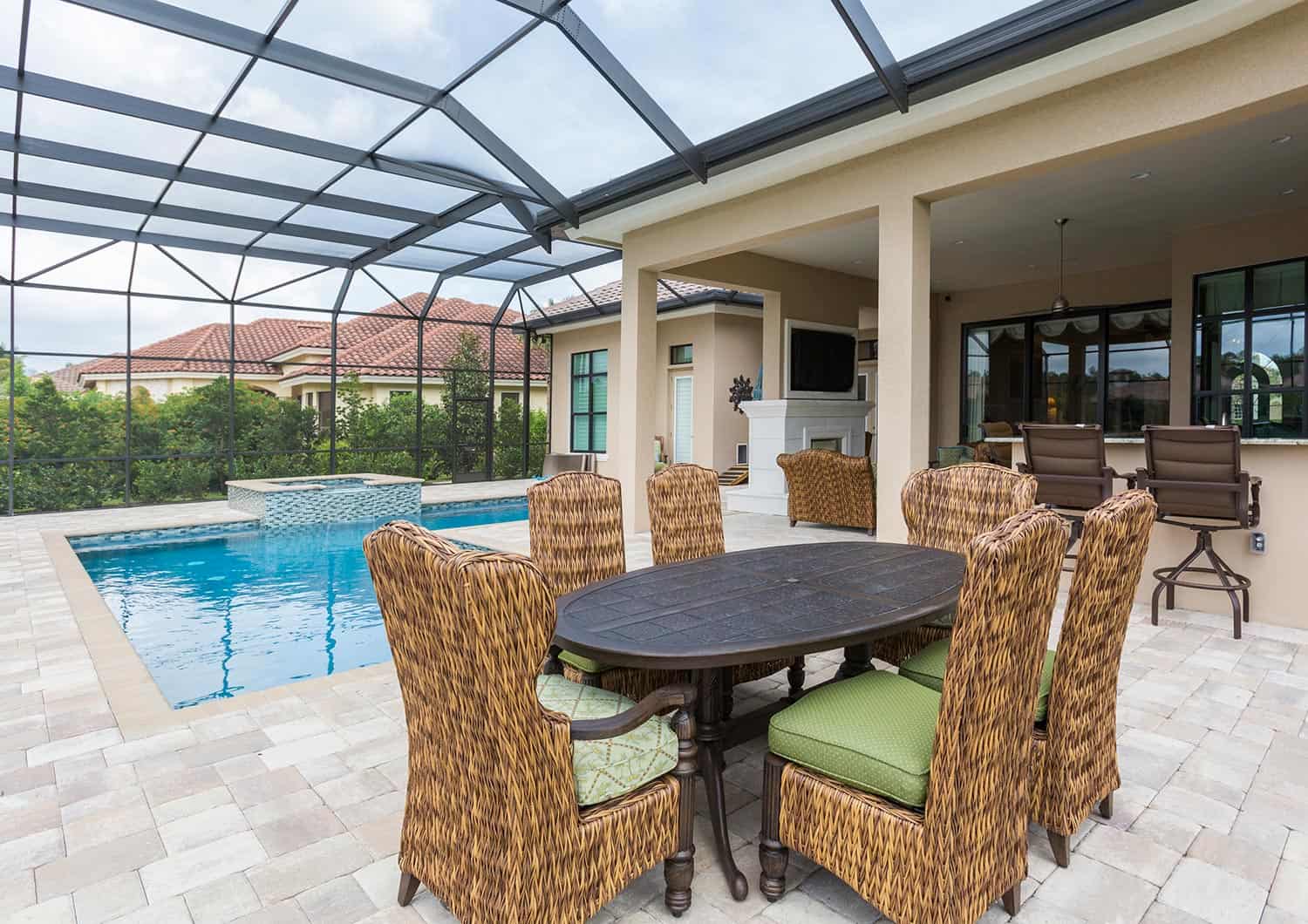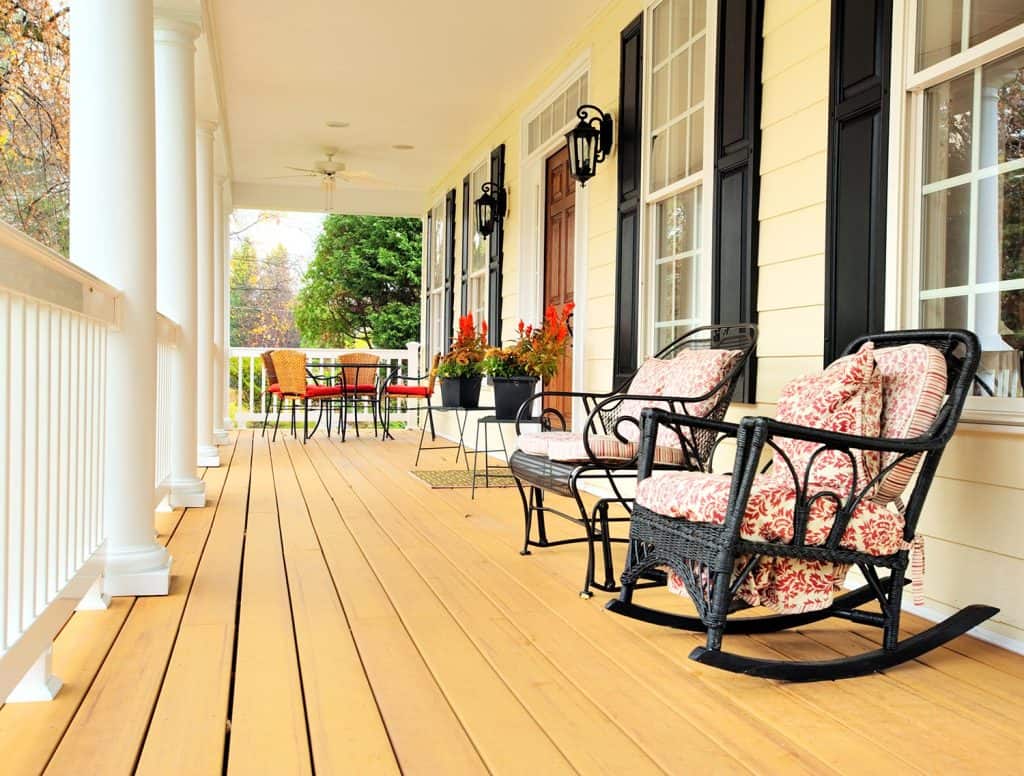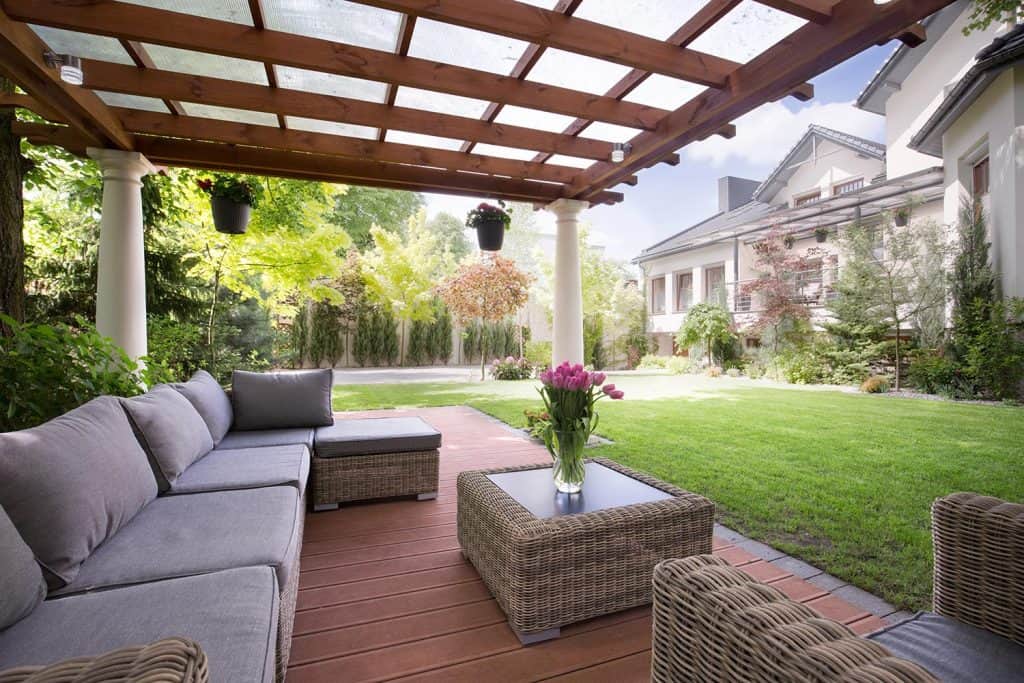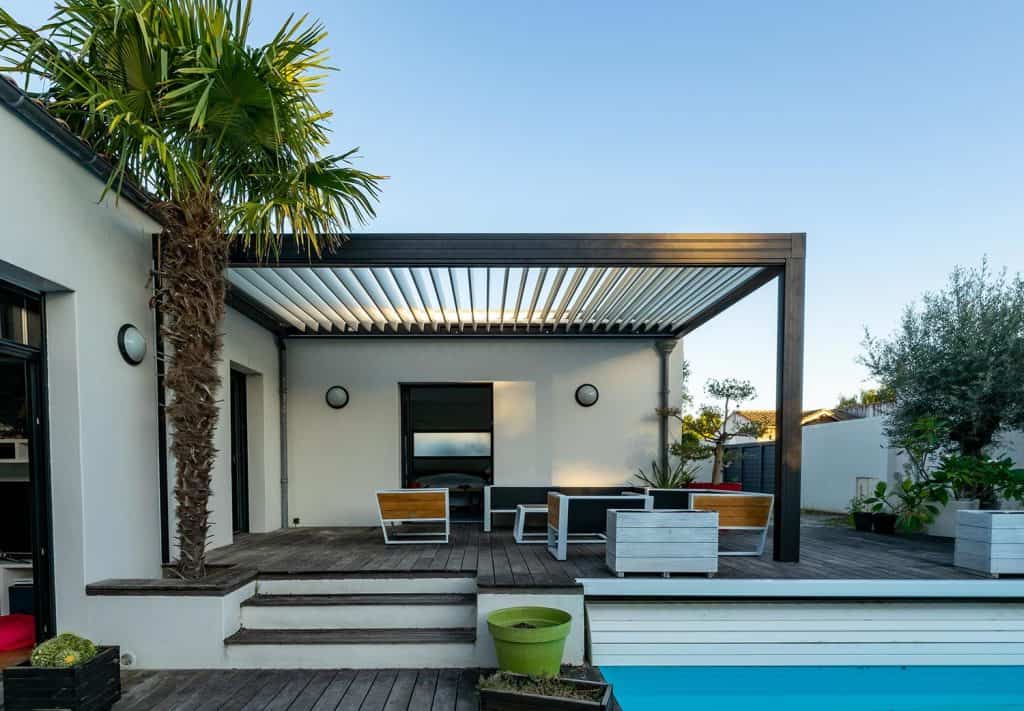When the weather warms up and the sun is out, there are few better ways to spend an afternoon than a charming indoor-outdoor transition area. You're probably familiar with a screened-in porch or a patio, but if you hail from cooler climes, you may be unfamiliar with a lanai. What is it? Does a Lanai have a roof?
Suppose you're seeking a way to bring the outdoors in or an area to entertain your guests and family. In that case, this Hawaiian architectural feature may be an excellent addition to your house. Continue reading to learn about the history of Lanai and how to use your space in your own home.

What is Lanai?
The word "lanai" is derived from the Hawaiian language, and it refers to a balcony that extends over the ground and connects to an existing roofline of a house, sometimes made of concrete, stone, or pavers. According to Lanai Guy's Tammy Weir, the term dates back to the 19th century and means " A roof over the patio or a porch located on the back of your home that is supported by a foundation composed of concrete, stone, or pavers." It's no surprise that people from a tropical climate have taken to Lanai, which is so common in commercial and residential construction. However, a lanai does not always have walls (or maybe opened when the weather is nice).

Does a lanai have a roof?
A porch is a section of a house's exterior generally at the same level as the inside floor. It usually has a wooden floor and, in most cases, a roof. The Lanai is another term for verandah or balcony, which is used more frequently than Lanai. It's actually the Hawaiian word for patio or balcony.
People often get confused between Porch, Verandah, Patio and Lanai. External enclosed extensions to a home come in many shapes and sizes. These may provide a lovely aesthetic as well as valuable extensions to the living room. Some are suited to warmer climes, while others make it possible to sit outside in the wintertime.
Understanding the distinction between porch, patio, veranda, and lanai enclosures can aid in determining which one is appropriate for its indoor base point.
Porch

A porch is erected in front of the entrance. It's on the same floor level as the inside and is an outside extension. Porches may be covered to keep them safe from the weather, insects, and other external variables.The fence's appearance might vary, but it will usually be more ornamental. The enclosure is usually more stylistic and has columns, railings, or short walls. Porches may be entirely separated from one another with screens or full-height walls in other circumstances. Finally, porches are generally covered with a roof extension.
Verandah

In general, a veranda is a porch that runs the length of one building's entire facade. Verandahs can sometimes go all the way around the house and cover several sides. A wraparound porch is another name for this expansion. It's lower than the roof and on the floor level, similar to other porches. A veranda, when sifted through, may be transformed into a full-fledged extension of a home.
Patio

Patios stand on the ground level, whereas porches and verandahs are built on higher levels. A patio will not be directly linked to the structure; instead, it will be situated near it. A patio is a space within your home that may be used for entertaining and relaxing. It's typically paved in the yard, with many types of materials. The paved area can be covered and enclosed, but it will not be considered a patio regardless of screening. It will become an outdoor haven when screened. Furthermore, an enclosed patio will give you a one-of-a-kind outdoor experience in the colder months.
Lanai
The word "lanai" comes from Hawaii, and it's the most obscure of the lot. In this sense, a porch, verandah, or patio could be termed a lanai. On the other hand, the name refers to a somewhat larger area that is comparable to an additional room outside a home. Like other external expansions, lanais are attached to an entrance and protected by the building's roof. A lanai will generally be positioned around the back of the house rather than in front of it.
Unlike the other three, A lanai is a little bit of everything at once. It's like a porch or veranda that's covered, and, like a balcony, it's generally on the ground floor of a home. It's not isolated; however, it isn't necessarily because it is above entry-level. It usually has concrete or cement flooring, although it can be made of any substance.
Why Should You Add a Lanai to Your Home?
"The true advantage of a screened Lanai, screen room, or enclosure is that it provides an outdoor living area that's ideal for entertaining and relaxing in the great outdoors," says Weir.
The Lanai has long been associated with lounging back and absorbing nature's beauty in solitude in Hawaii. As contemporary architecture continues to reflect a wide range of global influences, many architects, designers, and design aficionados have become enthralled by the ease with which it exudes charm. In ancient Hawaiian culture, the Lanai was most frequently utilized in the early morning and late evening, providing a feeling of calm and serenity with nature.
If you're not from Hawaii or live in a different climate, you can appreciate the desire to create your own space that reflects Hawaii's traditional Lanai.
Even if you don't live in a subtropical region, a lanai's year-round accessibility allows you to enjoy the outdoors for many months each year. According to Weir, you may create your tropical paradise by filling it with vegetation.
How to organize the Most of Your Lanai Garden
Whether you're searching for a home with a lanai or already live in one, there are several advantages to it. Here are some of our favourite ways to make the most of your Lanai for any situation.
- Start an outdoor garden. A lanai, which is well-suited to plants that require part sunlight, can readily be transformed into a herb garden or flower vase. Even if your Lanai only has enough space for a single table and chair, make it as lush as feasible to create a soothing atmosphere.
- Create an outdoor meditation den. To make your Lanai the ideal meditation area, add some candles and comfy cushions for optimum relaxation. While you may want to bring some comfortable floor cushions with you when the weather is nice, consider water-resistant outdoor alternatives.
- Enjoy your Lanai year-round. For those who live in colder climates, one or two well-placed outside heaters or a fire pit (if yours is exposed to the elements) can turn a lanai into a welcoming place to relax and appreciate nature, even during the winter.
In this article, I discussed Lanai and the difference between Porch, Verandah, Patio and Lanai. I hope you find this article helpful. Do let me know in the comments below - do you have any questions? What are your thoughts on Lanai?
